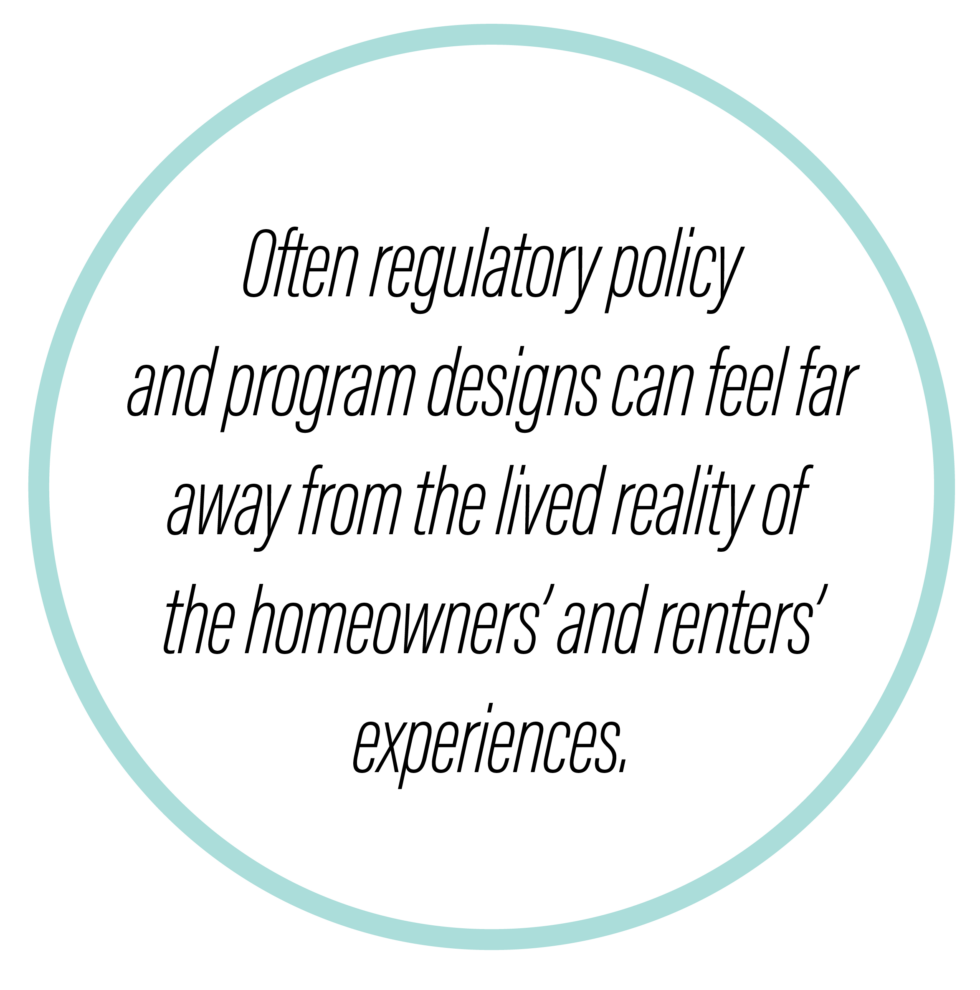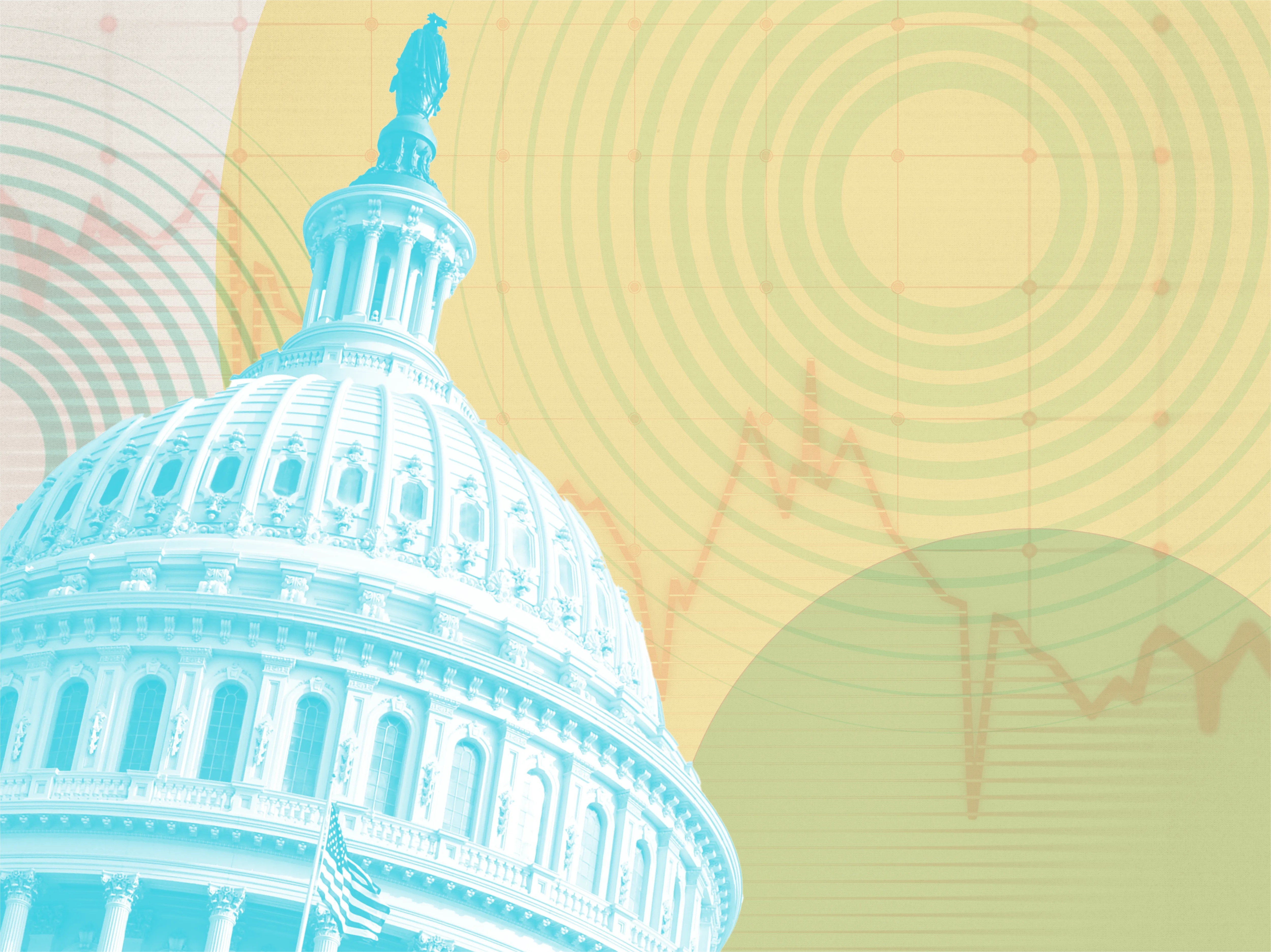We are living in a moment of transition as people are interacting with the grid, their utilities, and their energy use (and generation) in new ways. The times and behavior are changing – from rooftop photovoltaic (PV) systems that allow people to generate electricity, to emerging vehicle-to-grid programs that will allow people to discharge energy from their parked cars to support the grid during times of grid stress, to the way we think about and use energy in our homes.

In 2022, ILLUME conducted 121 interviews across four states as part of a Department of Energy (DOE)-funded project to understand home decision-making and new technology adoption. During our interviews, our team observed the impacts of utility rate policies, such as Net Energy Metering (NEM) and Time-of-Use (TOU) rates, rebates, and renewable energy initiatives specific to each geographical location.
The interviews we conducted as part of this DOE study provide a snapshot of how homeowners and renters talk about energy, energy usage and conservation, and their home decision-making. In this blog, we zoom in on rooftop solar to share what we heard from homeowners and renters living in Arizona (AZ) and Massachusetts (MA). We focus on these two states because there was higher awareness and consideration of solar in MA and AZ than we heard in Georgia (GA) and Illinois (IL).
While Arizona is one of the top states for installations of solar, with 6,457 MW generation capacity, much of that is in large utility-scale solar projects, rather than distributed solar.
Although ILLUME didn’t intentionally recruit interview participants to explore solar adoption and attitudes, we observed regional variations that align with the trends. Specifically, the study illustrates the regional differences in attitudes towards solar that are aligned with policy frameworks that encourage or discourage rooftop solar adoption.

Many AZ residents we interviewed considered or expressed an interest in rooftop solar. In all but one case, they opted not to move forward with the installation, largely because the financial models did not work out. Arizonans expressed a variety of opinions about solar panels, shaped by both the legislative landscape as it related to solar, utility rate designs and policies, and opinions of family members, neighbors, or other community members. For example, one person explained his decision not to install solar, referencing reduced subsidies, lower net metering rates, and concerns about his roof:
“Previously, you’d sell the electricity back to the utility at the rate they charge. Not anymore–it’s like 20 cents on the dollar now. So, we do not use solar panels here, even though they said Arizona’s the third best state in the country for that.”
Similarly, another person—who had recently moved to Arizona from the Midwest and initially was very interested in solar installation—explained that they ultimately decided not to install a rooftop PV system because of their ability to use technology to adjust their energy use to avoid higher rates during peak times on their TOU rate which impacted the potential savings from a rooftop PV installation, thus lowering the benefit of solar.
“The reality is the savings [with solar] are not a lot. I think for the $40 or $50 that it might save us a month, it doesn’t offset the $80,000 to buy the equipment, deal with some third party, add another project to a really busy family’s list.”
In this person’s case, another factor that influenced their decision not to install solar was their family and community, many of whom had also investigated solar and opted not to install a PV system.
“It’s sunny 360 days of the year. Why doesn’t everybody have solar energy? We have family here that have each gone through this process [of considering solar installations] and said, they’re ugly and not worth it. There’s a bit of that influence as well.”
In summary, while there was significant awareness of solar among AZ interview participants, only one person interviewed had installed rooftop PV, and the sentiment around rooftop solar was generally negative, with concerns about aesthetic appearance, damage to the roof from pigeons nesting under the panels, and minimal financial benefit being key disincentives to adoption.

By contrast, several MA interview participants were considering adopting solar and had previously participated in utility energy efficiency rebate and incentive programs. One participant had installed solar, and another research participant was just finishing upgrading his home’s heating system to switch from fossil fuels to an all-electric heat pump system before installing rooftop PV.
“The plan was to go solar because while house hunting, we saw one massive house that had no electric bill, and it just blew my mind. Since then, it’s everything electric, then we’ll get solar panels installed so we can see how much solar energy we can use to minimize our electricity bill.”
This participant was one of several who had participated in the state energy efficiency program, Mass Save. He explained: “Because here in Massachusetts, the program’s called Mass Save, and their goal overall is to help folks be able to afford more efficient means of heating and cooling their homes just for… the environment and the overall cost? I think those are the two points [cost and environment], but I’d have to check their website just to confirm.”
Another participant shared their experience with Mass Save, noting that they know the program offers incentives for energy-efficient technology:
“When we were investigating our roof, we did take advantage of doing a virtual site visit through Mass Save. I know that there are incentives out there to help people overcome the costs of acquiring more energy-efficient technologies.”
An interview participant in MA was one of the few people in the entire study who had already installed solar. In their case, the primary motivator was bill savings.
“A couple of years ago we looked into solar panels. Our neighbors went with a [solar] company, and they were happy with them. We reached out to that company and went forward with it. It has helped us with our electric bill, and we put them on the back of the house—so the front didn’t look bad—which gets the most sun anyway.”
While the aesthetics of the solar panels were a concern for this individual, as they had been for people we spoke with in AZ, because the panels were on the back of the house—and the finances worked out—they decided to move forward with the installation. They also opted to move forward with a company that their neighbors had previously worked with and had a good experience with, creating the opposite kind of peer influence than in AZ, where we heard people being dissuaded from solar installation by friends and neighbors.

Whether because of utility and regulatory policy, program materials and outreach, or some other factor, based on this research, we did see that there is an ecosystem supporting energy efficiency and renewables in Massachusetts that does not exist in Arizona. This ecosystem includes contractors and solar installers, and salespeople who are engaging potential customers alongside the state energy efficiency program and state policies that enable the customer financials to work out more favorably in MA than it does in AZ.
Often regulatory policy and program designs can feel far away from the lived reality of the homeowners’ and renters’ experiences. However, as these interview anecdotes suggest, the impacts of policies can and do shape how homeowners are making decisions about installing—or not installing—upgrades to their homes. By encompassing a wide range of utility service territories and states, this study provided a unique opportunity to examine how different local policies impact choices at a local level. We recognize climate change as a global challenge, but effects are experienced locally, necessitating local-level adaptations and actions. This study, and others like it, enables our industry to gain insights into how different states and utilities are responding to these challenges and how customer decisions reflect these state-level policies and programs.






